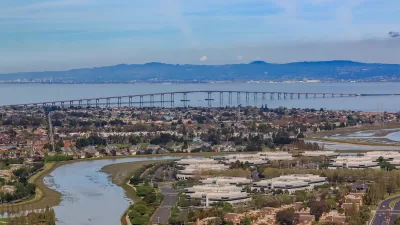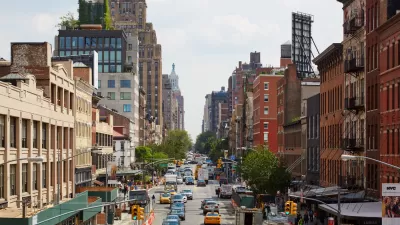Continuing his series examining the changes and new provisions detailed in the new federal surface transportation bill, Jason Jordan, APA's Director of Policy and Government Affairs, looks at the new Transportation Alternatives program.
Replacing the Transportation Enhancements, Safe Routes to School, and Scenic Byways programs from the prior comprehensive funding bill (SAFETEA-LU), the new Transportation Alternatives (TA) program was one of the most contentious pieces of the MAP-21 negotiations. So where did the final bill land?
Although funding for the program continues to be dedicated (albeit at FY 2009 levels), "The major compromise reached on Transportation Alternatives is to
essentially expand both flexibility for states and control for
metropolitan regions," writes Jordan. The new program expands the types of projects eligible for funding and gives each state an avenue to "transfer its balance of unobligated funding to other
projects."
According to Jordan, "Supporters of TA-eligible projects will have new opportunities to pursue
local projects funding through the 50 percent set aside for metro
areas. But, these same supporters will have to pressure states to ensure
that vital bike, pedestrian, and safety resources are not siphoned off
to other projects by state officials."
FULL STORY: Inside MAP-21: Transportation Alternatives

Alabama: Trump Terminates Settlements for Black Communities Harmed By Raw Sewage
Trump deemed the landmark civil rights agreement “illegal DEI and environmental justice policy.”

Study: Maui’s Plan to Convert Vacation Rentals to Long-Term Housing Could Cause Nearly $1 Billion Economic Loss
The plan would reduce visitor accommodation by 25% resulting in 1,900 jobs lost.

Planetizen Federal Action Tracker
A weekly monitor of how Trump’s orders and actions are impacting planners and planning in America.

Wind Energy on the Rise Despite Federal Policy Reversal
The Trump administration is revoking federal support for renewable energy, but demand for new projects continues unabated.

Passengers Flock to Caltrain After Electrification
The new electric trains are running faster and more reliably, leading to strong ridership growth on the Bay Area rail system.

Texas Churches Rally Behind ‘Yes in God’s Back Yard’ Legislation
Religious leaders want the state to reduce zoning regulations to streamline leasing church-owned land to housing developers.
Urban Design for Planners 1: Software Tools
This six-course series explores essential urban design concepts using open source software and equips planners with the tools they need to participate fully in the urban design process.
Planning for Universal Design
Learn the tools for implementing Universal Design in planning regulations.
Caltrans
Smith Gee Studio
Institute for Housing and Urban Development Studies (IHS)
City of Grandview
Harvard GSD Executive Education
Toledo-Lucas County Plan Commissions
Salt Lake City
NYU Wagner Graduate School of Public Service




























